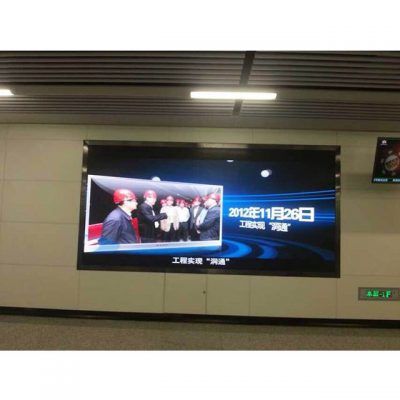either indoor rental led display or outdoor waterproof full-color led display will generate heat in the process of operation, which will lead to the rise of the temperature of led display. usually, the indoor led display panel can naturally dissipate heat due to its low brightness, but the outdoor led advertising screen needs air conditioning or axial flow fan to dissipate heat due to its high brightness and high heat. because the led display is an electronic product, the rise of temperature will affect the light decay of the led display lamp beads, the working efficiency of driving ic, the service life of the led display, and so on.
led display has great prospects for development because of its advantages of energy saving, environmental protection and long life. but the temperature is very important to the led display screen. the influence of temperature on the led display screen is related to the life and light efficiency and color of the led display screen. so the right temperature is very important for the led display screen.
the influence of temperature on led display screen has the following five points:
1. high temperature will lead to the complete destruction of led display screen
(1) if the working temperature of the led display exceeds the load-bearing temperature of the chip, the luminous efficiency of the led display will decrease rapidly, resulting in obvious light decay and damage.
(2) most led displays are encapsulated with transparent epoxy resin. if the junction temperature exceeds the solid phase transition temperature (usually 125 c), the encapsulation material will change to rubber shape and the thermal expansion coefficient will rise sharply, which will lead to the open circuit and failure of led display.
2. increasing temperature will shorten the life of led display
the lifetime of the led display is reflected in its light decay, that is, the brightness becomes lower and lower over a long period of time until it finally goes out. usually, the lifetime of led display is defined as the time when the luminous flux decreases by 30.
usually, there are several reasons for the light fading of led display.
(1) the defects in the materials of led display chips will multiply and multiply rapidly at high temperatures until they invade the luminous region and form a large number of non-radiative composite centers, which seriously reduces the luminous efficiency of led display. in addition, at high temperature, micro-defects in materials and fast-spreading impurities from interfaces and panels will also introduce into the luminous region, forming a large number of deep levels, which will also accelerate the optical decay of led display devices.
(2) transparent epoxy resin will denaturate and yellowing at high temperature, which will affect its light transmission performance. the higher the working temperature, the faster the process will go. this is another main reason for the light decay of led display screen.
(3) the optical decay of phosphors is also a major factor affecting the optical decay of led displays, because the attenuation of phosphors at high temperature is very serious.
therefore, high temperature is the main cause of led display light degradation and shorten the life of led display.
different brands of led display screen have different light fading. usually, the manufacturers of led display screen will give a standard light fading curve. the led display screen luminous flux attenuation caused by high temperature is irrecoverable. there is no irrecoverable luminous flux before the led display screen, which is called the “initial luminous flux” of the led display screen.
3. increasing temperature will reduce the luminous efficiency of led display
the reasons why temperature affects the light efficiency of led display include the following aspects:
(1) with the increase of temperature, the concentration of electrons and holes increases, the bandgap width decreases, and the electron mobility decreases.
(2) as the temperature rises, the radiation recombination probability of electrons and holes in the potential well decreases, resulting in non-radiation recombination (heat generation), which reduces the internal quantum efficiency of the led display screen.
(3) the blue light peak of the chip shifts to the long wave direction as the temperature rises, which makes the emission wavelength of the chip mismatch with the excitation wavelength of the phosphor, and also reduces the extraction efficiency of the external light of the white led display.
(4) as the temperature rises, the quantum efficiency of phosphor decreases, the light output decreases, and the external light extraction efficiency of led displays decreases.
(5) the properties of silica gel are greatly affected by ambient temperature. with the increase of temperature, the thermal stress inside the silica gel increases, which leads to the decrease of the refractive index of the silica gel, thus affecting the light efficiency of the led display screen.
